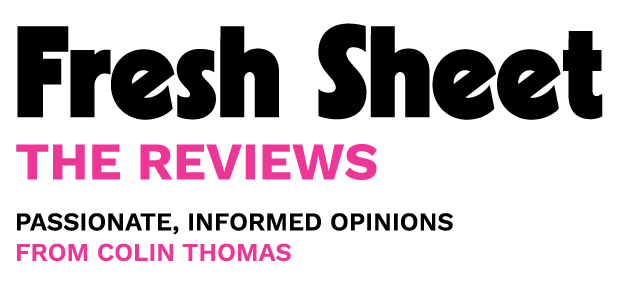
The hero’s journey is about attempting to overcome obstacles. It’s a series of peaks and valleys.
THREE-ACT TEMPLATE
ACT 1
Ordinary World
- We see hero’s (the protagonist’s) world as it exists before their adventure begins.
- The Ordinary World may contain an event called the Inciting Incident, which kicks the story into action.
Call to Adventure
- In the Call to Adventure, someone or something demands that the hero take action. In the Call to Adventure, the Ordinary World is disrupted; the hero is presented with an opportunity to make a necessary change.
Refusal of the Call
- The hero refuses to accept the Call to Adventure.
- It’s important to identify why the hero refuses the Call. If it’s because of a particular fear, the protagonist may be called upon to overcome that fear in the story’s Climax.
- Here’s another way of looking at that last point: the reason for the Refusal makes the hero’s Vulnerability
- The tension created by the hero’s Vulnerability is what makes the story exciting. Will the hero succeed?
- The tension created by the hero’s Vulnerability is also what makes the story meaningful. What does the hero have to learn in order to succeed? How does the hero grow?
The Intervening Mentor
- The Intervening Mentor is a parental figure, sidekick, or pal who supports the hero in taking action, either through their direct and ongoing presence, or through some kind of message or memory.
- Many characters can be mentors to the hero throughout the story, but only one is the Intervening Mentor, the character who encourages the hero to accept the Call, despite their Vulnerability, and cross the threshold into adventure.
Crossing the First Threshold
- The hero commits to their adventure and takes action that demonstrates that their adventure has begun.
ACT 2
What is the hero’s Act 2 goal?
- It’s important to identify this goal. The story’s action emerges from the protagonist’s pursuit of their goal.
- As the protagonist’s understanding deepens, revisions to the goal will reflect that deeper understanding.
- In Act 2, the protagonist pursues what they
Obstacles, Strategies, Enemies, and Allies
- In their quest to reach their goal, the protagonist encounters obstacles.
- The protagonist applies different strategies to attain the Act 2 goal. Some succeed. Others fail.
- The protagonist encounters resistance and support, enemies and allies. (The protagonist’s chief enemy is their antagonist.)
- The protagonist’s struggle creates narrative tension, which is essential to your story.
- Throughout the story, the hero will continue to encounter obstacles, to apply strategies, confront enemies, and to take strength from allies. This “step” isn’t confined to the first part of Act 2.
Mid-act Breakthrough
- Because of a revelation, the protagonist understands the terms of their quest more clearly and commits to it more fully.
What is the Hero’s Altered Goal?
Ordeal
- Having clarified their goal, the protagonist faces an Ordeal.
- If the Act 2 Culmination is going to be negative, this Ordeal will likely resolve positively. If the Act 2 Culmination is going to be positive, this Ordeal will likely have a negative outcome, which spurs the protagonist on to greater effort.
- You can think of this step as a tension builder, a strategy for making the Act 2 Culmination more dramatic. “Oh!” you might think. “The hero has overcome the Ordeal! Yay! But wait! In the Act 2 Culmination, the hero fails!” The opposite might also be the case: “Damn! The hero has failed to overcome the Ordeal. But now she is succeeding in the Act 2 Culmination! Hooray!”
Act 2 Culmination
- At this point, the hero either succeeds or fails in achieving their Act 2 Goal.
- This turning point shifts the focus from what that protagonist wanted (Act 2 Goal) to what they really need (Act 3 Goal.)
- If this turning point is negative (all is lost), Act 3 will likely reverse and result in triumph. If this turning point appears positive (triumph), Act 3 will likely result in failure.
ACT 3
- Act 3 is all about pursuing the deeper objective.
What is the protagonist’s Act 3 Goal?
Obstacles, Strategies, Enemies, and Allies (Act 3)
Crisis and Climax
- In the Crisis, circumstances force the hero to confront their greatest challenge — and their primary enemy (antagonist).
- In the Climax, the hero either succeeds or fails.
Resolution
- In the Resolution, we see how the hero has changed as a result of their journey. Has the hero gained wisdom and knowledge or has the hero become corrupted and defeated?
- We also see how the world has changed (or not) as a result of the hero’s struggle.
The most important principles in the three-act structure are:
– The accumulation of insight: In actively pursuing their evolving goal, the protagonist meets obstacles and uses various strategies to overcome them. As they encounter both failure and success, they gain insight. If they gain enough insight, the story will end happily. If they fail to gain sufficient insight, the story will end in defeat.
– The reversal of polarities: The protagonist experiences alternating successes and failures as they try different strategies to overcome obstacles throughout Acts 2 and 3. This principle also applies to the major plot points. A negative Act 2 Culmination could be followed by a positive Act 3 Climax, or the reverse could take place. This reversal of polarities sustains narrative tension and gives the story shape.
Note: Not all classically constructed stories include every element of the three-act structure. Sometimes there’s no Mid-Act Breakthrough or Ordeal, for instance. It’s also important to remember that there’s flexibility in the order of the steps.





0 Comments